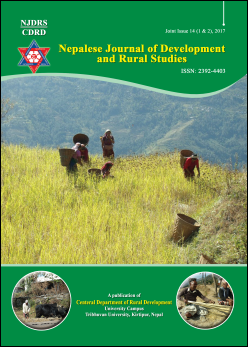The Landless Sharecroppers of Dumraha Village: A Case Study on Food Sufficiency among Tharu Community
DOI:
https://doi.org/10.3126/njdrs.v14i1-2.19646Keywords:
Tharu community, Landless, Sharecropping, Food sufficiency, Copying strategyAbstract
This research analyzed the situation of sharecroppers and their food sufficiency level in forty Tharu community households in Dumraha village of Sunsari. Household interviews, focus group discussions, key informants survey and observations are led to fulfill the research objective. Among ninety-one landless sharecroppers forty households were selected for the study applying the equation. The landlessness Tharu people are compelled to do agriculture or non-agriculture labor besides farming. The Tharu communities are engaged as sharecropper to face the challenges of food self-sufficiency. Some of the sharecroppers are found to be the previous owner of the land. The practice of sharecropping is fully based on mutual relationship between landlord and sharecroppers, where they agree in sharing the output equally. Sharecropping has helped the landless Tharus to be food self sufficient.
Nepalese Journal of Development and Rural Studies
Vol. 14 (Joint issue) (1&2), 2017, Page: 36-42Downloads
Downloads
Published
How to Cite
Issue
Section
License
This license enables reusers to distribute, remix, adapt, and build upon the material in any medium or format, so long as attribution is given to the creator. The license allows for commercial use.




